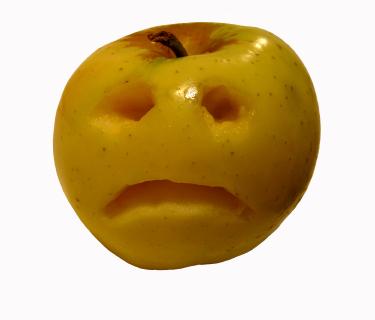
As I said in my last blog, simple rules don't always translate to simple implementation. The straightforward principles of our Weight Loss Eating Plan are not difficult to explain.
Presented with the plan, some people can cut grains and sugar out of their diet with relief rather than resistance. They finally have permission to eat the meat and fat they crave, and their joints no longer hurt. With this set of instructions, success rates in my practice are higher than ever before, but success is not universal. Other people struggle with the concepts, the implementation or both.
Let's take some time with the first common struggle, namely accepting the fact that carbohydrates cause the problem.
What's a carbohydrate? Carbs are anything that is not a protein (meat, eggs, fish and poultry) or a fat (butter, lard, oils) - essentially, all fruits, vegetables, grains, and sweets. Dairy and nuts share a mixture of protein, fat, and carbs.
Once, I carefully explained to a very intelligent person that every time you eat, you must eat protein and fat together and never eat carbohydrates alone. We discussed it, she agreed, and soon thereafter grabbed an apple for a snack. In response to my raised eyebrows, she exclaimed, “But you didn't mean fruit did you?” Fruit has been celebrated in our culture as a healthy snack with disregard for the effects of our unnatural (way outside of how we evolved) consumption of multiple fruits of all seasons on a daily basis.
Any carbohydrate, including fruit, whole grains, asparagus, and cotton candy, becomes a potential problem when it asks your body to make insulin. Your body makes insulin in proportionate response to the amount your blood sugar goes up from eating a carbohydrate food.
Sugary sweets, white flour, and sweet liquids (even fruit smoothies with protein powder) are absorbed quickly by the body and rapidly raise your blood sugar level, which prompts your body to produce insulin to reduce the elevated blood sugar. Insulin whisks blood sugar away to fat cells where it can be stored. To make sure no other sugars sneak into the bloodstream, insulin locks up all the sugars stored in fat cells and holds them there until insulin levels fall again. Insulin leaves your bloodstream cleaned of sugar's traces, as clean as before you ate the carbs.
Unfortunately the process of clearing out the blood sugar tends to make you feel as if you have no fuel for life. Even though you have plenty of sugars stored in your fat cells, your bloodstream is empty and you are hungry and possibly even hypoglycemic (shaky, sweaty, weak). Which makes you want to eat again.
Not all carbs cause the problem to the same extent. From worst to best - from quickly to slowly absorbed carbs - the list looks like this:
Eliminate: cotton candy, soda pop, most desserts, refined (white) flour, sweetened coffee drinks, fruit juice and fruit smoothies, fat-free dairy* and any carbohydrate eaten by itself.
Minimize: whole grains (rice, breads, crackers), root vegetables, sweet fruits, shelled peas, and very slightly sweetened cream or dark chocolate.
Moderate: most other vegetables not included above, nuts*, and berries.
Eat all you want: leafy greens (spinach, lettuce, kale, cabbage, chard).
(*Carb content is significant, but also contains protein and/or fat)
Many of the foods in the middle two categories have been celebrated as health foods, a recognition they deserve only in comparison to the uppermost group. Whole grains may be better than cotton candy, and may play a small role in a weight maintenance plan, but they are not part of a weight loss plan.
I encourage you to introduce this simple suggestion: every time you eat, reach first for protein and fat. Let me know how it goes for you.
My next blog post will address an even larger challenge, Hurdle #2: But what can I eat? Or, if carbs are the problem, fat is the solution.
